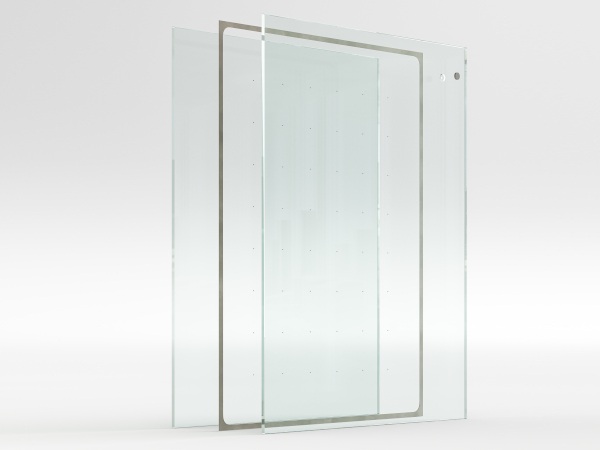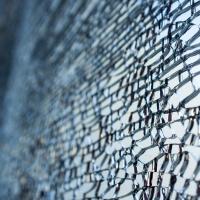Date: 27 April 2015
One of these is a defect called “white haze”. I heard a while ago that this phenomenon is also being called “ghosting”. Ghosting is a funnily accurate description, since if you don’t know exactly what must be done to avoid the defect – it really feels as if there’s a ghost in the furnace causing it.
Have you had a ghost in your tempered glass?
So what is white haze? The white hazy material can be dust, roller residuals or actual mechanical deformations caused by a mechanical pressure that is too strong between the glass and the rollers. White haze can be caused by multiple reasons and can occur in several different forms. Perhaps, the most common type of white haze is a vertical strip in the center of the glass. White haze can occur also near the ends, on the corners of the glass or all over the glass with vague hazy areas or some repetitive stripes or marks. There are many types of white haze that can occur, and all of those can be solved with a different medicine.
.jpg)
White haze – marks on the glass
.jpg)
White haze – marks on the glass
In this article, we’ll go through a check-list that you can use as a basis for your systematic problem-solving process to eliminate the white haze defect.
There any many types of white haze that can occur and all of those are solved with a different medicine. As with any defect, a systematic approach to problem solving is extremely important when tackling the white haze defect.
Remember also to download our Practical advice on how to solve tempered glass quality problems − the presentation that can help overcome your other quality issues in tempering process.
Step 1: Define and describe the problem
- In which part of the glass / loading is the haze visible?
- Are the white marks always in the same position?
- Is the pattern repetitive?
- Determine the scratches, length, notches, imprints, size and color of the defect. Use a magnifying glass, if needed.
- On which glass thicknesses / types is the defect visible?
Step 2: Analyze the changes in the surrounding environment
- When did this start?
- What changes happened in the surrounding environment?
- Is there a grinding station near (the possibility of dust flying into the furnace)?
Step 3: Use process data and analytics
- Is there a correlation between the marks and the scanner picture?
- How does the Quality Monitoring System data look like? Are there any irrationalities in the process data?
- If SO2 has been used, how much and when?
Step 4: Analyze possible mechanical sources
- Ceramic rollers
- Surface roughness?
- Dust?
- Solid particles on the roller surface?
- Cracked, brittle surface?
- Roller leveling?
- Insulation
- Is insulation broken?
- Are the furnace doors working?
- General cleanness
- Dust on the floor and bottom heaters?
- Dust or particles in or on top of the air convection channels?
- Functionality of
- Heaters
- Thermocouples
- Convection (pneumatic air system or convection blowers)
- Drive system
- Is the drive speed consistent?
- Does the roller bearing work well?
- Are the drive belts in good condition?
Step 5: Corrective actions
- If the problem is in the process parameters, you will be able to see the correlation between the process analytics and the white haze marks. By correcting the process parameters to run the glass flatter in the furnace, you will be able to fix the defect. The most common white haze problem is the haze in the center of the glass, and it occurs exactly due to the wrong parameters. This is corrected via a parameter change by decreasing the roller temperatures and/or increasing the top convection. Note! Too much of the top convection creates a different kind of haze issue.
- If the problem is mechanical, Step 4 will guide you to your corrective actions.
A systematic approach to problem solving will help you get rid of the white haze effect. As mentioned in the beginning of this post, there are a number of different forms in which white haze presents itself. In the coming posts, we will cover how to solve each type of white haze problem point by point.























Add new comment